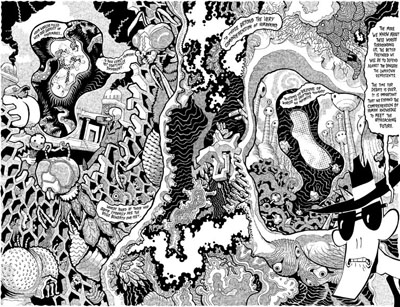“House” aka “Hausu” aka “HAAAAAUUGHWOOOOSSS”

New Yorkers with a taste for the deeply weird and gorgeous and ridiculous, you owe it to yourself to go see Hausu playing at the IFC Center this week. Actually, y’know what? Correction– you owe it to ME to go, since I live thousands of miles away and won’t be able to.
Comrades, we’re talking about something unprecedented: a high-end screening of an actual print of what was long considered one of the most legendary horror bootlegs in existence. As far as I know, this fantastical film has been nigh-impossible for Westerners to view any other way. Until now.
Kudos to comics/film guru Ben Catmull for turning me onto this raging brilliant nutterfest.
Shot in 1977 by experimental Japanese director Nobuhiko Obayashi (and based on a story written by his 7 year old daughter), Hausu is one of the most riotously demented movies ever committed to celluloid. There’s plenty I could tell you about it (and there are tons of rabid, frothing film geek reviews online if you want to go exploring) but my instinct tells me it’s best to go unprepared, and just give yourself over to being repeatedly tit-slapped by the technicolor Japanese KRAY ZAY. My own virgin viewing experience was similar to seeing The Forbidden Zone or Eraserhead or The Billy Nayer Show for the first time– mindblowing, seminal, beautiful, and fucked up as all hell. Seifuku Koo Koo!

Come to think of it, there are a lot of wonderful things happening in New York imminently: Throne of Blood (a completley different flavor of Japanese cinematic genius) is showing at Film Forum, BAM is celebrating Dr. Martin Luther King on Tuesday, and tomorrow there’s the Knickerbocker Orchestra’s WFC performance of Prokofiev’s Peter and the Wolf, with Neil Gaiman narrating. Plus, two ultra high-concept Coilhouse Issue 05 photo shoots that have been in the planning stages months are finally happening. We’ll divulge more about those shortly.
Meanwhile, seriously, DO NOT miss seeing Hausu in the theater. GO, GO, GO. If my fervent urging hasn’t yet convinced you jaded bastards that this screening is not to be missed, click below for several more clips and stills.








